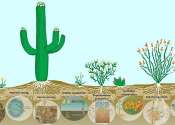Study finds patterns of crop-specific fertilizer-nitrogen losses, opportunities for sustainable mitigation
Nitrogen fertilizers play an essential role in ensuring global food security. However, the applied fertilizer-nitrogen, particularly that exceeding crop demand and soil N retention capacity, can potentially escape into the ...









